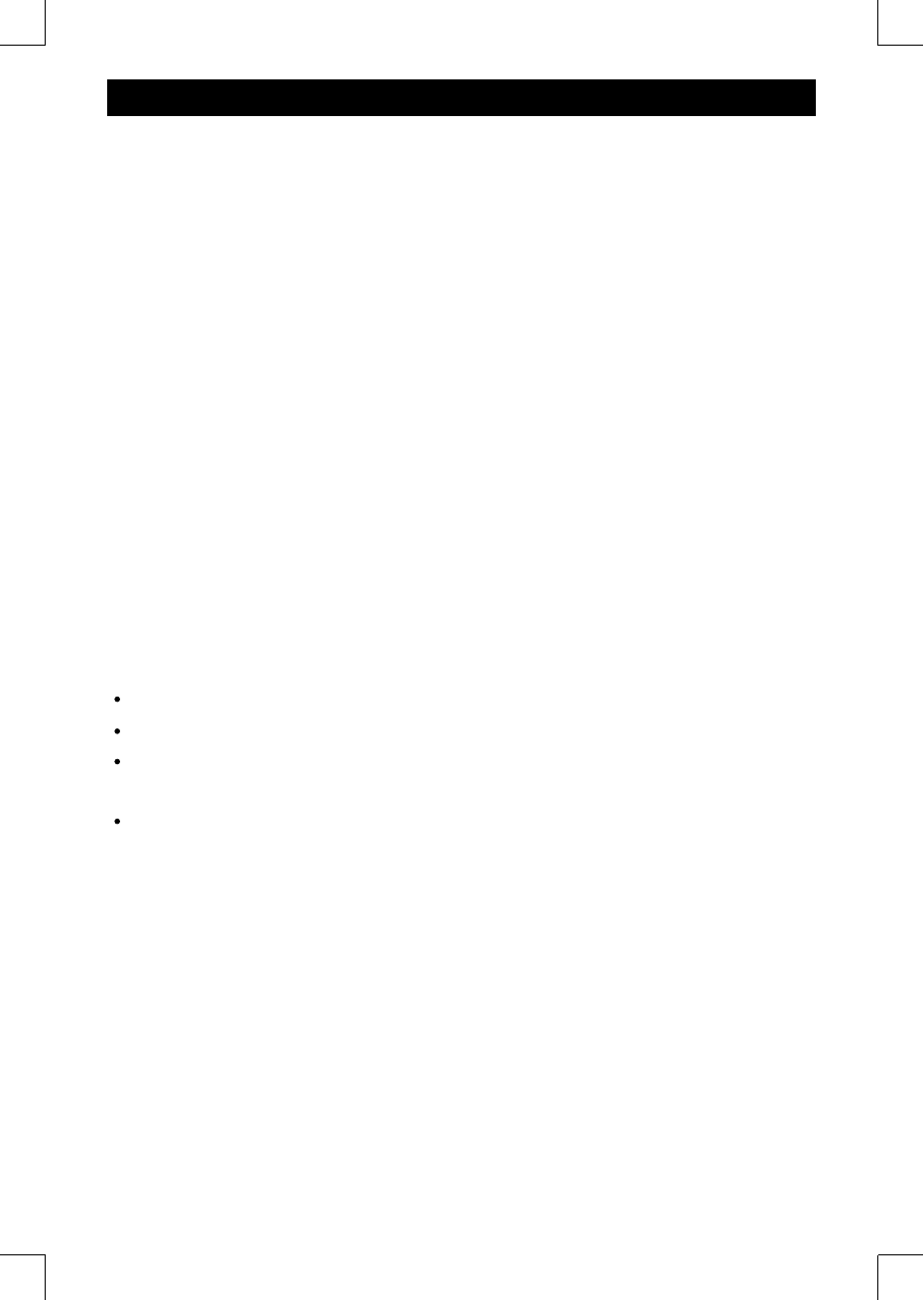Radio User Manual
Table Of Contents
- Ò³Ãæ 1
- Ò³Ãæ 2
- Ò³Ãæ 3
- Ò³Ãæ 4
- Ò³Ãæ 5
- Ò³Ãæ 6
- Ò³Ãæ 7
- Ò³Ãæ 8
- Ò³Ãæ 9
- Ò³Ãæ 10
- Ò³Ãæ 11
- Ò³Ãæ 12
- Ò³Ãæ 13
- Ò³Ãæ 14
- Ò³Ãæ 15
- Ò³Ãæ 16
- Ò³Ãæ 17
- Ò³Ãæ 18
- Ò³Ãæ 19
- Ò³Ãæ 20
- Ò³Ãæ 21
- Ò³Ãæ 22
- Ò³Ãæ 23
- Ò³Ãæ 24
- Ò³Ãæ 25
- Ò³Ãæ 26
- Ò³Ãæ 27
- Ò³Ãæ 28
- Ò³Ãæ 29
- Ò³Ãæ 30
- Ò³Ãæ 31
- Ò³Ãæ 32
- Ò³Ãæ 33
- Ò³Ãæ 34
- Ò³Ãæ 35
- Ò³Ãæ 36
- Ò³Ãæ 37
- Ò³Ãæ 38
- Ò³Ãæ 39
- Ò³Ãæ 40
- Ò³Ãæ 41
- Ò³Ãæ 42
- Ò³Ãæ 43
- Ò³Ãæ 44
- Ò³Ãæ 45
- Ò³Ãæ 46
- Ò³Ãæ 47
- Ò³Ãæ 48
- Ò³Ãæ 49
- Ò³Ãæ 50
- Ò³Ãæ 51
- Ò³Ãæ 52
- Ò³Ãæ 53
- Ò³Ãæ 54

IMPORTANT NOTES
Since digital circuitry may cause interference to other radio or television
tuners nearby, switch this unit off when not in use or move it away from the
affected radio/television tuner.
NOTE: This digital apparatus does not exceed the Class B limits for radio
noise emissions from digital apparatus as set out in the Radio Interference
Regulations of Industry Canada. These limits are designed to provide
reasonable protection against harmful interference in a residential
installation. This equipment generates, uses and can radiate radio frequency
energy and, if not installed and used in accordance with the instructions,
may cause harmful interference to radio communications. However, there is
no guarantee that interference will not occur in a particular installation. If
this equipment does cause harmful interference to radio or television
operation (which can be determined by turning the equipment off), the user
is encouraged to try to correct the interference by one or more of the
following measures:
Reorient or relocate the receiving antenna.
Increase the separation between the equipment and receiver.
Connect the equipment into an outlet on a circuit different from that to which
the receiver is connected.
Consult the dealer or an experienced radio / TV technician for help.
4
IMPORTANT










